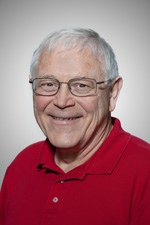Prof. John C. Hemminger

Distinguished Professor of Chemistry; External Scientific Member, Fritz Haber Institute. [Ph.D. in Chemical Physics from Harvard University, MA]. He brings expertise in the application of surface science methodologies to problems of atmospheric interest.
Prof. Hemminger’s research combines structural experiments (scanning tunneling microscopy and electron microscopies) with spectroscopic experiments (vibrational spectroscopy, photoelectron spectroscopy, and mass spectrometry) to understand chemical reactions at the air/water interface.
Surfaces and the chemistry that happens on them, control much of what happens in our modern high technology world. As such, chemists are interested in reactions that occur on a wide variety of both simple and complex surfaces (e.g., surfaces of nanostructures, surfaces of electrodes, heterogeneous catalysts, solar energy systems, surfaces of semiconductors, as well as particles in the atmosphere).
Recent advances in experimental probes of the atomic and molecular properties of solid surfaces now allow detailed studies of these and many other phenomena at the molecular level. The Hemminger group uses modern surface science techniques to study the chemistry and structure of adsorbates on highly characterized surfaces of metals, semiconductors, and insulators. Underlying all of their research is an interest in understanding the fundamentals of the interactions of small molecules with surfaces. Such fundamental understanding will lead to the ability to design new materials that have the desired surface chemistry and to control the surface structure on the nanometer and atomic scale.
The Hemminger group combines structural experiments (scanning tunneling microscopy (STM) and electron microscopies) with spectroscopic experiments (vibrational spectroscopy, photoelectron spectroscopy, and surface reactivity studies (mass spectrometry) to understand the mechanistic details of heterogeneous reactions. They develop new kinds of experiments that provide unique insight into surface reactions. One such new experiment is our usage of laser induced desorption of molecular adsorbates from surfaces coupled with Fourier transform mass spectrometry to detect and quantify the species desorbed from the surface. This unique experiment provides them with the ability to quantitatively follow complex chemical reactions on a surface as the reaction proceeds. They also use STM to follow the progress of chemical reactions on surfaces at the molecular level. Recently they have used modern surface spectroscopies to study surface reactions that occur on particles in the atmosphere. They have shown, for example, that adsorbed water plays a major role in the surface chemistry of sea salt particles reacting with gas phase smog constituents in the marine troposphere. They have also shown that minor constituents of sea salt particles (e.g., Br-) segregate to the surface of the particles and are very important to subsequent heterogeneous chemistry.
- Surface Chemistry and Physics

